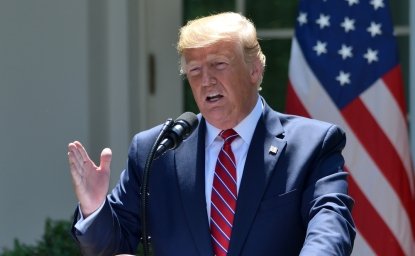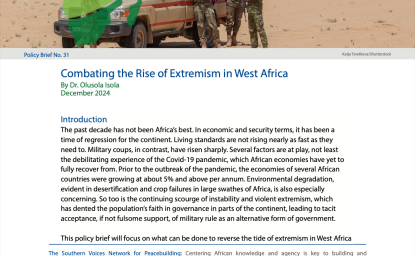HTS: Evolution of a Jihadi Group
Christopher Solomon chronicles the evolution of Hayat Tahrir al Sham in Syria.
Christopher Solomon chronicles the evolution of Hayat Tahrir al Sham in Syria.
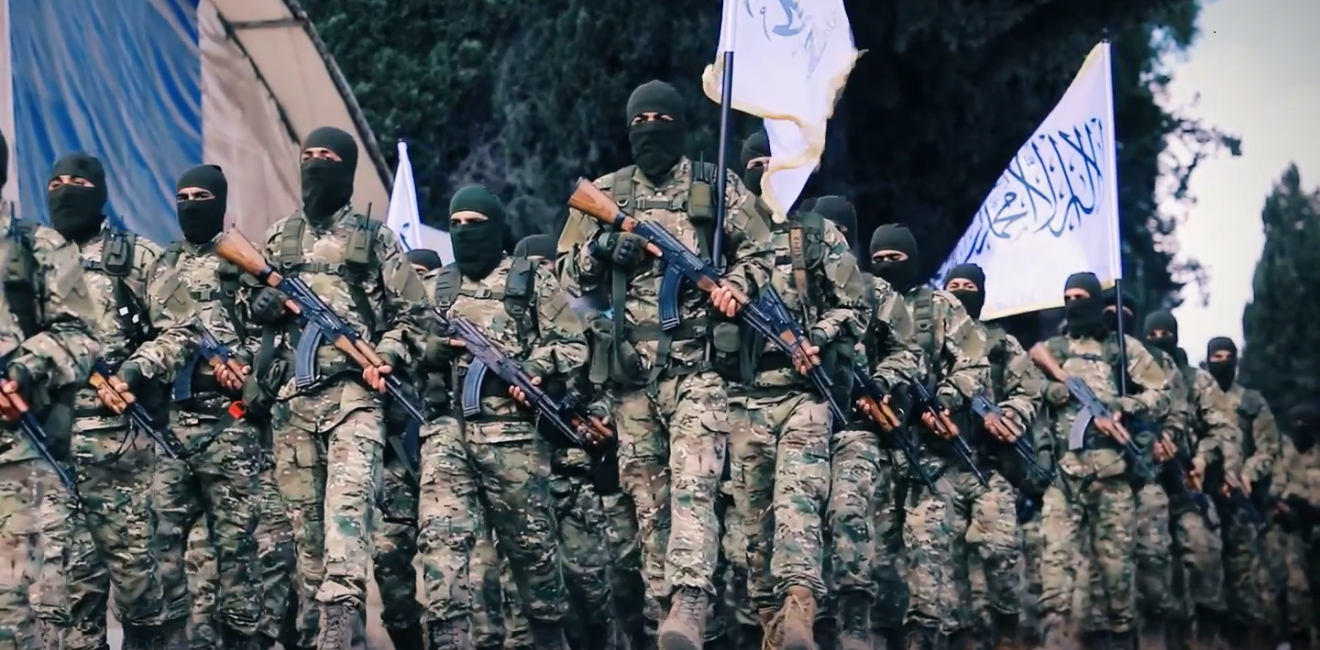
Since 2017, Hayat Tahrir al Sham (HTS)—or the Organization for the Liberation of the Levant—has been the dominant Islamist militia fighting the regime of Syrian President Bashar al Assad. It is an umbrella group for five smaller armed factions estimated to have up to 10,000 fighters. A Sunni Muslim movement, HTS controls just over half of Idlib Province and small parts of surrounding provinces—a corner of northwest Syria roughly the size of Rhode Island.
HTS is a hardline group committed to replacing the Assad government with an Islamic state. As a fighting force, HTS has demonstrated ruthlessness—employing a mix of political coercion and violence—to maintain control over its territory. As the regime recaptured parts of Syria, rebels from at least five Islamist groups were evacuated to the HTS stronghold in a series of deals with the regime. HTS emerged as the dominant group.
The United States designated HTS as a foreign terrorist organization in 2018. HTS has since tried to project a more pragmatic image. It jettisoned the transnational goal of exporting its ideology and adopted a local focus on replacing the Assad regime. As of mid-2022, HTS had military superiority over other jihadist groups in Idlib. It had also withstood years of the regime’s ground assaults as well as Russian airstrikes.
Abu Mohammed al Jolani, the nom de guerre of Ahmed Hussein al Shara, is the controversial HTS leader. He was born in 1982. After the 2003 U.S. invasion of Iraq, he joined the insurgency against U.S. forces led by al Qaeda in neighboring Iraq. He returned to Syria after the uprising against Assad erupted in 2011. In 2012, he announced the creation of Jabhat al Nusra, or the Nusra Front.
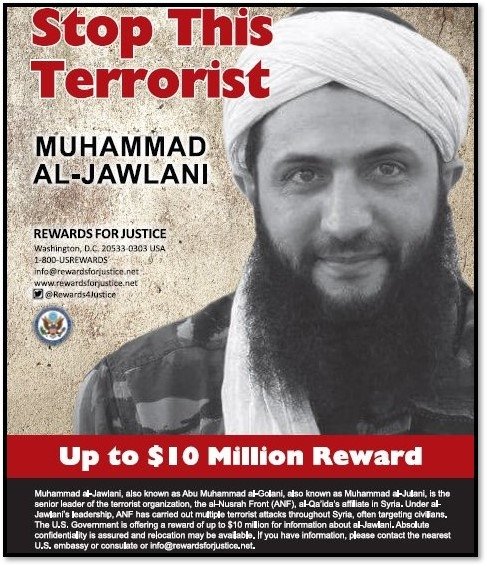
In April 2013, Abu Bakr al Baghdadi, the leader of the Islamic State in Iraq (ISI), claimed that Jabhat al Nusra was a Syrian subordinate to his organization. But the factions soon clashed—killing thousands—as they competed for fighters in Syria. Jolani ultimately shifted allegiance and pledged loyalty to al Qaeda, which provided fighters, arms and money. But in 2016, Jolani broke ties with al Qaeda. Jolani oversaw the consolidation of other extremist factions into the newly branded HTS in 2017.
The United States listed Jolani as a “specially designated global terrorist” in 2013. In 2017, the FBI offered a reward of $10 million for information leading to his arrest.
HTS has three factions, according to Orwa Ajjoub, a researcher at Lund University in Sweden. They include “those with a high sense of pragmatism led by al Jolani”; a second faction with a “vested interest in HTS’s dominance”; and “a minority ideological faction largely sidelined by al Jolani and his supporters,” Ajjoub wrote in 2021.
Jolani’s inner circle is predominantly Syrian, which reflects his efforts to “recast the group as more of a local Syrian organization,” Dareen Khalifa, an analyst at the International Crisis Group, said in 2022. Since most hardline elements “have either left [HTS] or were killed or completely marginalized,” Jolani’s faction drives the group’s agenda.
HTS’s short-term goal is to “stabilize the area under our control and administer it through an alliance of local Syrian revolutionary forces that are committed to protecting Idlib,” Jolani told the International Crisis Group in January 2020. But HTS is “a project built from circumstance and won’t last forever,” he said. “We don’t have a predetermined long-term plan.” HTS will someday develop a political manifesto “that could clarify our identity,” he said.
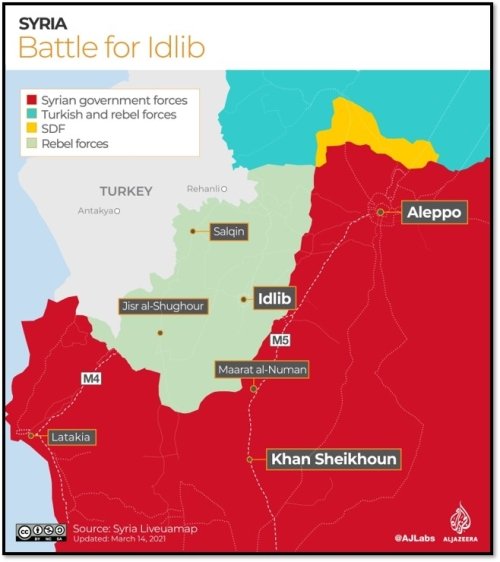
Jolani, who once wore a turban and military fatigues, has cultivated the image of a community-oriented civic leader. In August 2020, he visited a restaurant in Idlib and served people food during Eid al Adha. In January 2022, he was photographed wearing Western-style clothing as he met local residents at the opening ceremony for a new road. In May 2022, he visited a marketplace in Idlib City to join celebrations for Eid al Fitr at the end of Ramadan. He stopped to take selfies, as people chanted “Long live our emir!”
Jolani has appealed to the United States to remove its terrorist designations of him and HTS. “Through our 10-year journey in this revolution, we haven’t posed any threat to Western or European society: no security threat, no economic threat, nothing,” Jolani told PBS’s Front Line in February 2021. “That’s why this designation is politicized.”
Mufti Abd al Rahim Atun, who goes by Abu Abdullah al Shami, is a senior religious figure close to Jolani. Atun is the head of the HTS Sharia Council and one of the group’s highest-ranking jurists. “Our group does not pose a threat to the West… We are the last to fight the Syrian regime and we will not be able to eliminate it without international assistance,” he told French newspaper Le Temps in 2020. In September 2021, after the Taliban takeover in Afghanistan, he advocated a Taliban style of jihad in Syria.
Mustafa Qadid, who goes by Abu Abd al Rahman al Zirbeh, is a high-ranking HTS commander. He reportedly was a baker in Idlib before joining Jabhat al Nusra as a driver for Atun in 2012. He later became a military commander. Qadid has taken over much of the financial sector in HTS territory. Jolani appointed him commander of the Crossing Management Body, which manages border crossings with Turkey in the north and regime-held areas in the south and east.
HTS does not directly govern territory, but it has supported the Syrian Salvation Government (SSG). Formed in 2017, the civilian-led SSG administers the opposition-held part of Idlib and surrounding areas. SSG ministers have included both independent technocrats as well as men linked to HTS. “We will remain independent, meaning we won't tolerate pressure from any side,” Dr. Mohammed al Sheikh, the first prime minister of the SSG, pledged in November 2017.
Experts, however, have debated the extent of the SSG’s independence. HTS “is fashioning the new administrative structures to put local residents center stage, while the group retains control, or at least a veto, over strategic decisions,” Haid Haid, a fellow at Chatham House, wrote in 2019. The SSG “is no more than a tool to provide the ‘legal’ and administrative frameworks for HTS’s takeover of the region’s economy and resources,” Nisreen Al-Zaraee and Karam Shaar wrote in a 2021 report for the Middle East Institute.
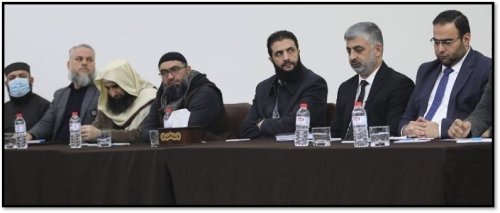
Other analysts have argued that the SSG is not the same as HTS. The SSG “participates in HTS’s power strategy but cannot be considered an offshoot … or its civil branch,” Jerome Drevon and Patrick Haenni wrote in a 2021 paper for the European University Institute.
The SSG provides a range of public services and utilities, including water and electricity. It has 10 ministries, including economy and resources; health; interior; justice; religious affairs; education; higher education and scientific research; agriculture and irrigation; development and humanitarian affairs; and local administration and services.
The SSG’s legislative body, the Shura Council, has 75 men. Candidates for the council or to head ministries are reportedly pre-selected. Ali Abdulrahman Keda, an engineer and former member of the Syrian Army, was elected by a majority of the Shura Council in December 2019 as the third prime minister.
The SSG’s Shura Council “acts as a pseudo parliament to represent different regions of Syria, sectorial interests, and communities,” said Drevon, a senior analyst at the International Crisis Group. HTS has its own Shura Council that is “entirely separate,” he said. But SSG and HTS structures overlap in some areas. The Majlis al Ifta, or the SSG religious council, includes individuals who are also members of the HTS Majlis Shari, which is the group’s highest religious authority.
Since taking control of Idlib in 2017, HTS has refrained from imposing Islamic practice in line with its Salafist, or ultra-conservative, ideology. “Governance should be consistent with Islamic Sharia, but not according to the standards of ISIS or even Saudi Arabia,” Jolani told Khalifa during a visit to Idlib in 2021. HTS enforced gender segregation in schools and universities but did not impose its own curriculum, Khalifa said. HTS leaders boasted that a high percentage of university students were women. The group has also not banned smoking or compelled women to veil their faces. Morality police stopped patrolling the streets by January 2022, The Washington Post reported. HTS, however, reportedly monitors social media and has detained TikTok users who post purportedly immoral videos.
Some jihadists in Idlib alleged that HTS, in focusing on public services, had lost its way. HTS faced criticism for forming a soccer league for its fighters in March 2022. “The opposition and the Islamic factions are preoccupied with normalization with the regime and improving their image before the West by humiliating themselves and playing soccer,” Abu Mohammed al Halabi, a jihadist from Idlib told Al Monitor.
HTS has not tolerated public opposition. In November 2019, residents of Kafr Takharim stormed police stations and expelled officials linked to HTS after olive oil producers were forced to turn over oil as part of zakat, mandatory donations that are redistributed to the poor. HTS responded by shelling the town of Kafr Takharim. At least five people were reportedly killed.
HTS has pledged to defend and provide for the estimated four million people under its jurisdiction, which includes more than two million internally displaced people from other parts of Syria. “The humanitarian issue is the most important issue that we can work on together, to provide these people with dignified lives,” Jolani told PBS in 2021.
The results have been mixed. In December 2021, HTS promised to subsidize bread through SSG-run bakeries to combat rising food prices. But in March 2022, the government raised the price of grain, flour, ghee, and other food staples after Russia’s invasion of Ukraine triggered a global wheat shortage. Residents have complained that the HTS control of trade led to food shortages amid high rates of poverty and inflation.
As of mid-2022, more than 90 percent of people living in northwest Syria needed humanitarian assistance, according to the United Nations. But U.N.-supported aid, sent through the border with Turkey, reached only 60 percent each month. On July 8, 2022, Russia vetoed a one-year extension of the assistance. It alleged that aid ended up in the hands of HTS “terrorists.”
Hospitals may have to turn patients away, schools may have to close, and food assistance will be cut off, U.S. Ambassador Linda Thomas-Greenfield warned in July 2022. People “will die because of this vote – and the country who shamelessly deployed the veto today.”
HTS has relied on tax revenue at border crossings. Bab al Hawa has been the most important crossing for both aid deliveries and trade. HTS has reportedly collected millions of dollars monthly in customs fees. It reportedly controls other crossings, including the informal Dorriyeh crossing with Turkey. HTS also smuggles people and goods on the crossings.
HTS, often in cooperation with the SSG, has reportedly coopted much of the economy in northwest Syria. As of 2021, HTS, through Watad Petroleum, was earning some $1 million a month from a monopoly on importing and distributing gasoline and diesel fuel, according to a U.N. report. HTS is also heavily involved in financial services and telecommunications.
HTS fighters are mainly equipped with AK-47 rifles, machine guns, and rocket-propelled grenades (RPGs). A significant amount of its arsenal was seized from regime bases and rival militant groups. The militia has also deployed suicide bombers and planted improvised explosive devices against Assad’s forces. The group’s military wing has 11 units that are each named after the companions of the Prophet Mohammed.
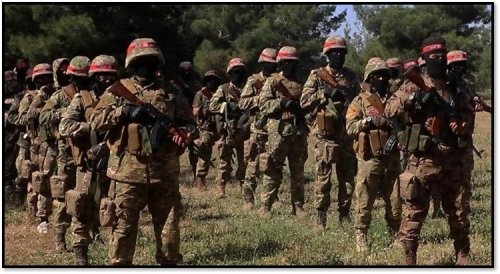
Earlier in the Syrian civil war, HTS was active beyond Idlib, including near the capital. In 2017, some 500 fighters in Ghouta launched a counteroffensive to break the regime’s siege around the suburb of Damascus. In March 2017, HTS suicide bombers struck government forces beyond Ghouta as its fighters briefly pushed deep into Damascus, but the advance was foiled. HTS forces were eventually evacuated to Idlib following the ceasefire agreements struck with Russia and the Assad regime in 2018.
HTS has sustained control despite repeated attacks by the Syrian military and Russian airstrikes. In 2019 and 2020, Syrian offensives on Idlib recaptured 1,457 square miles, including Kafranbel, Saraqeb, and Maarat al Numan as well as the M5 highway. But the operations were costly. HTS unleashed waves of suicide car bombs and used anti-aircraft guns and artillery against Syrian forces.
In March 2020, Russia and Turkey agreed on a ceasefire. Between March 2020 and the summer of 2022, the military situation in Idlib had stalemated due to the ceasefire, with occasional Russian airstrikes and sporadic clashes between HTS and government forces.
In May 2022, HTS signaled its military preparedness at drills on four fronts in southern Idlib, eastern Idlib, northern Latakia and the area northwest of Aleppo. A video on HTS’s Amjaad media channel showed armored military vehicles, including tanks, moving among destroyed buildings and through the countryside.
Among Islamist groups, HTS has long competed with Islamic State of Iraq and Syria (ISIS) for followers and territory. They vied for control over eastern Syria as ISIS established a caliphate that stretched from northeast Syria into Iraq. Since 2017, HTS has launched raids and arrested ISIS cells operating in areas under its control. It has reportedly handed ISIS fighters over to Turkey. Two leaders of ISIS—Abu Bakr al Baghdadi (in October 2019) and Abu Ibrahim al Qurayshi (in February 2022)—were killed in Idlib by U.S.-led operations.
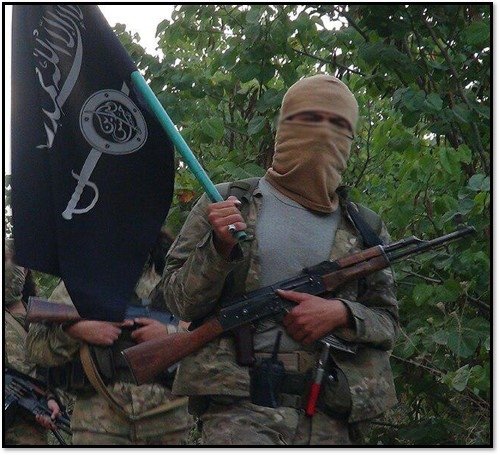
HTS has also subdued Islamist rivals, such as Ahrar al Sham, and absorbed its fighters. In January 2017, Abu Jaber al Sheikh, a senior Ahrar al Sham leader, defected and took a dozen commanders and 1,000 fighters to join HTS. “We left Ahrar al Sham because of all the rivalries at the leadership level,” Abu Amer al Homsi, another former Ahrar al Sham leader told Al-Monitor in mid-2021. “We had no more laws to follow, and the movement turned into groups bickering over positions and interests, which made it lose its strength.”
In July 2020, HTS conducted security operations against Hurras al Din, a group affiliated with Al Qaeda. In 2021, HTS also confronted Jundallah, another Sunni jihadi group opposed to the Assad regime, in Latakia province—and prevailed. In a subsequent deal, Jundallah fighters agreed to either join HTS or surrender their weapons and return to civilian life.
HTS has cracked down on the other Islamist groups in the region. As of 2021, HTS had reportedly detained more than 170 foreign fighters. In April 2022, it reportedly transferred 50 foreign jihadis—from France, Morocco, Saudi Arabia and Turkey—to Turkey. They included some members of ISIS.
HTS has struggled to navigate between ideological purists and realists. In March 2022, HTS hosted a celebration marking the 11th anniversary of the Syrian uprising, but it banned participants from displaying any other group’s jihadist banners. Its security forces also removed people who chanted slogans against Jolani slogans. Afterwards, jihadists blasted Jolani for allowing men and women to mix together at the commemoration.
The movement has repressed rival radicals “primarily because they pose an issue to its own organizational cohesion and the stability of the province,” said Jerome Drevon, a senior analyst at the International Crisis Group. “This is aligned with Western countries' views, but this is incidental.” HTS has “disavowed” al Qaeda, repressed its followers, and blocked their activities in Idlib, Drevon said.
Yet HTS has also engaged in dialogue with other armed opposition groups. In May 2022, it held talks with the Levant Front, a key faction in the Syrian National Army backed by Turkey to coordinate logistics in northwest Syria. “They agreed on several points, including halting media attacks against each other, facilitating the movement of the Levant Front fighters into Idlib, and vice versa for HTS fighters who would be able to enter the city of Azaz and other Levant Front-controlled areas,” Al-Monitor reported. The two groups also discussed eventually uniting the factions.
In 2018, Turkey formally declared HTS to be a terrorist group. Yet Turkey has also worked tolerated and occasionally coordinated with the movement. “HTS is an effective fighting force against the real terrorists and an effective fighting force against Assad, and the Turks need that,” James Jeffrey, a former U.S. ambassador to Turkey, told PBS Front Line. HTS is “the least bad option of the various options on Idlib, and Idlib is one of the most important places in Syria, which is one of the most important places right now in the Middle East.”
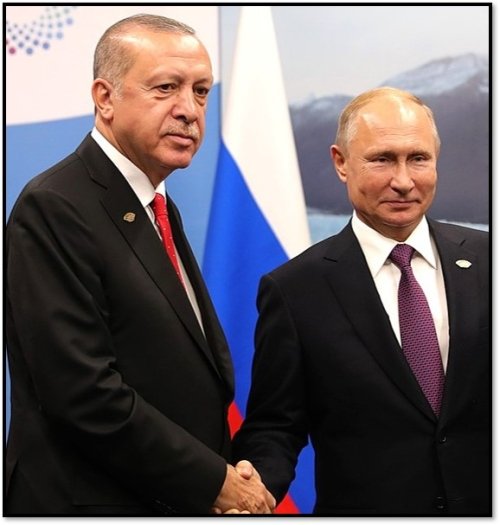
In 2018, negotiations between Turkish President Recep Tayyip Erdogan and Russian President Vladimir Putin led to the creation of a demilitarized zone—between nine to 12 miles long—at the border between Turkey and Syria. It was short-lived. In May 2019, Syrian launched an offensive against HTS and another rebel coalition in Idlib and Hama provinces.
In February 2020, Turkey launched Operation Spring Shield to counter an offensive by the Syrian regime in Idlib. In March 2020, Turkey and Russia brokered another ceasefire agreement that created a nearly four-mile corridor along M4 highway that was patrolled by Turkish and Russian forces.
Since the 2020 ceasefire, HTS and the regime have engaged in sporadic clashes that included shelling and sniper fire. In March and April 2022, Russia conducted air strikes on HTS targets around the town of Maarat al Naasan in Idlib province. In 2021, at his fourth inauguration address, Assad vowed that his top priorities included “liberating the land and confronting the economic and social ramifications of the war.” But neither side has recaptured areas it held before the ceasefire.
“Syria is a hot conflict, not a frozen one,” Geir Pedersen, the U.N. special envoy for Syria, said in April 2022. “The current strategic stalemate on the ground and Syria’s absence from the headlines should not mislead anyone into thinking that the conflict needs less attention or fewer resources, or that a political settlement is not urgent.”

Learn more about Hamas and how it relates to similarly aligned organizations throughout the region. Read more

